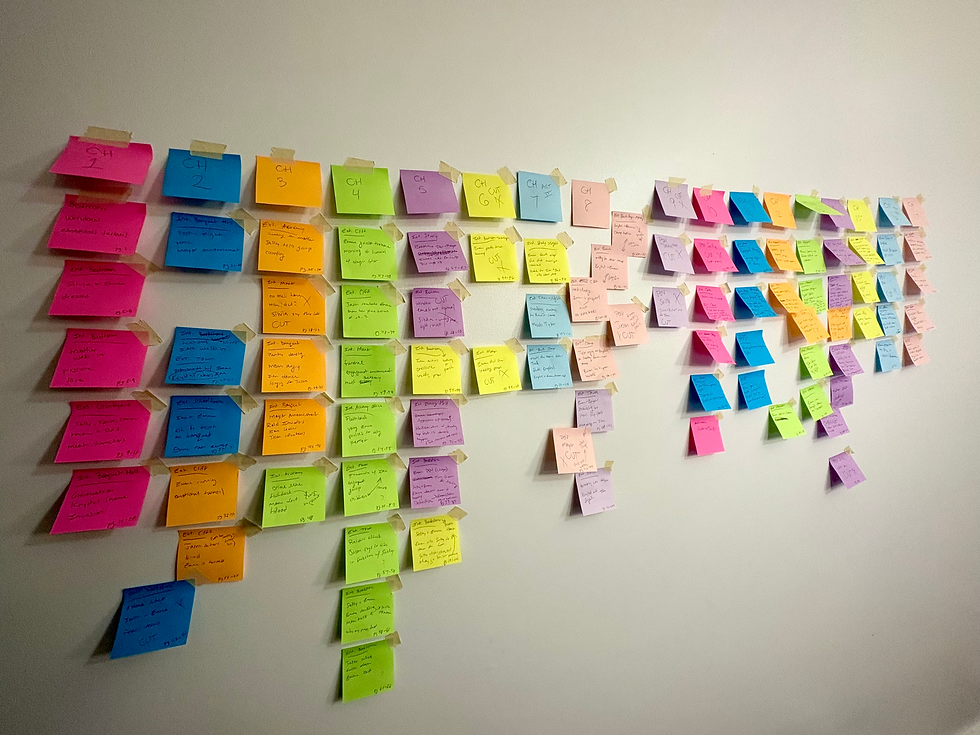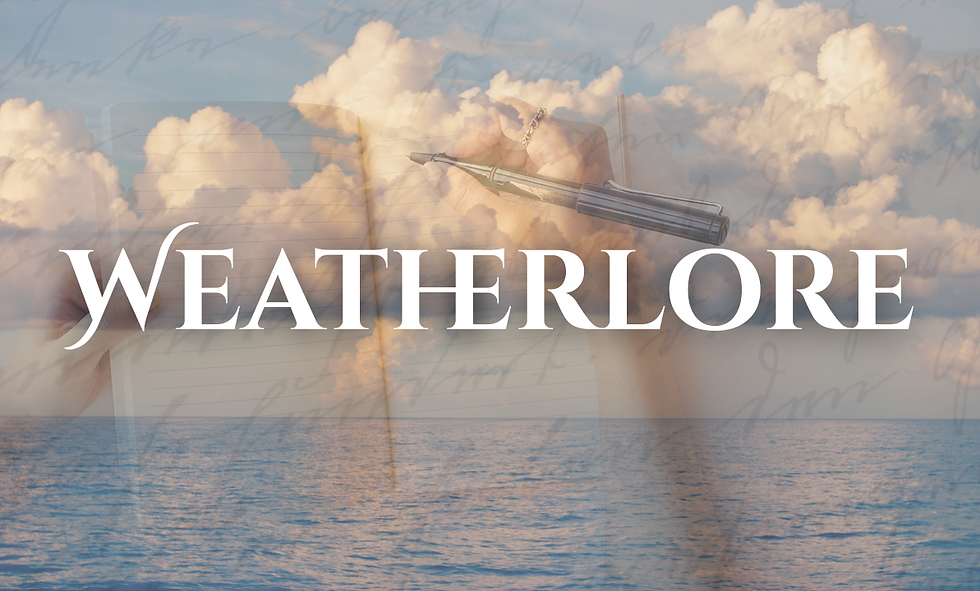Where Does The Writing Start?
- Diana Elizabeth Clarke

- Apr 24, 2021
- 8 min read
Updated: Nov 27, 2024

Whether you have a million of ideas roaming through your head, one golden notion of a story, or an empty mind yearning to create a story—we all start with a blank canvas. No matter how long you've been writing for, it is a common occurrence for writers to question where to start.
Inspiration can come from any and everywhere. The creative juices can hit at the most unexpected times, but a writer should never reject rolling with the punches their mind brings. I once was standing in line at the grocery store, bored out of my mind as I waited in the extremely slow-going check-out, until a flurry of writing inspiration struck me. Instinctively, I pulled out my phone and I texted myself everything I could in that moment to draw upon it later. It might have been a jumbled mess, but it was a place to start.
In my opinion, that is the most important aspect of being a writer; never risk the loss of an idea. Inspiration can so easily slip away from forgetfulness. Even if you remember that you once were inspired to write, if there is nothing to refer back to later it is possible to completely forget what inspired you in the first place. The best advice I can give to any writer is, no matter where you are, write down what comes to you. It can always be expanded upon later, but the best writing comes in the moment.

The smallest of inspiration or a flutter of an idea is just the beginning for a writer to create something wonderfully beautiful.
A dear friend once told me, you're not a writer if you don't write. It will never be perfect at first. That is what revisions are for. Blank pages cannot be edited, so why not fill that page with amazing words to read back and improve upon?
But what if you're at a loss? You were inspired—an idea is floating around in your brain—but what do you do with it? Every writer has their own method to expand on an idea, but like everything else in life, it comes from trial and error. A writer must discover for themselves what works and what doesn't for their writing process and story creation.
The Writing From Visuals Method
To help you discover what works best for you to develop from and create off of your writing inspirations, you can try the method I prefer to use during my creation process. This is not that say that you must wait around for inspiration to come before you can use this method. The wonderful thing about writing is that getting something, even the tiniest of words, can lead to an amazing story. Whether or not you have anything specific to inspire you, this method can be used to get some writing on a page. You can even use this as a prompt to create inspiration!
This method comes in three steps, each step expanding upon the last. Visuals and images are the foundation of your writing with this method, building a story around visuals you see or think of. Starting your writing this way not only helps get words on a page when you feel stuck or unsure how to develop your story, but it's great practice for writing with details and painting visuals for your readers to clearly imagine.
I. Floating Visuals
Books are essentially movies playing inside our heads. We get to picture the images for ourselves as we read, and it's no different for writers. Even before the words are actually written, we can picture the visuals we want for our story. It's the magic of writing—making our images come to life for someone else to experience them. More often than not, when inspiration hits there is an image the writer attaches to their inspiration. No matter how vibrant the visuals roaming inside the writer's head are, a great way to start drafting any story is to write down the images floating inside your mind. The trick to this is being as detailed as possible. Visualize your inspiration and clearly paint that image on a page with your words. Your visuals should explode off the page with descriptive imagery as well as scenery and sensory details!

Look at this image for example. Let's say I was inspired by a tree and this was the image that popped into my mind. Using the Floating Visuals step, I may write something like this:
Tall trees, with their dark mossed-covered trunks, arched over a loose dirt pathway. Dewy green leaves created walls on either side of the path—the outside world easily lost behind the emerald sea. There was a soft chill among the shadows of the forest with a warm light sparkling down through gaps between branches and leaves. Flutters and whistles whispered from up above as leaves danced against each other and wiggled with the gentle breeze. Further up the path, as the archway turned more into a tunnel of trees, sunlight shined brightly against the lonely woods.
Thinking of the five senses—touch, smell, hear, taste, and see—I was able to draft a written visual of my image full of vibrant details. With this exercise, something envisioned inside the mind is transferred into writing. Now, I have a page covered with words ready to be grown into a story!
II. Scene Play
The next step in the Writing From Visuals Method is developing a scene. Using the image we have, and the excerpt we wrote from said image, we have the bones of a scene. The strongest ability of a writer is imagination, as we use it to our advantage to see our stories play out. Writing with this method should be no different. Drawing on our imagination, we can take the small excerpt we wrote and expand it into a scene.
What's important in this step is to not worry about the 'who' just yet (that comes later). We want to focus on the 'what' of the story right now, moving things forward to see where it will take us. Playing with the visual and imagining what will happen within it, my excerpt from before can be expanded into this:
Alone and confused, she found herself in a part of the forest she never thought existed. It was extremely beautiful but incredibly haunting at the same time. Tall trees, with their dark mossed-covered trunks, arched over a loose dirt pathway. Dewy green leaves created walls on either side of a path—the outside world easily lost behind the emerald sea. She walked slowly as her bare feet skimmed across the cold and mushy ground. Her stomach twisted within her gut as an eerie sense of familiarity wafted around her, but no matter how hard she tried she could not stop herself from walking deeper into the forest.
There was a soft chill among the shadows while a warm light sparkled down through gaps between branches and leaves. Flutters and whistles whispered from up above as leaves danced against each other and wiggled with the gentle breeze. She wrapped her arms tightly around her chest as she dared herself to only look forward. Twigs snapped and leaves crunched in the distance, but she forced herself to ignore what may be lurking beside her. Further up the path, as the archway turned more into a tunnel of trees, sunlight shined brightly against the lonely woods. But as her heart quickened with hope of escape, despair quickly smothered her when she realized there were only more trees passed the light. She was trapped within an endless line of arching trees with branches ready to reach down and snatch her.
Although a very short scene, it's a start. My small inspiration from an image has grown into a larger idea with prospects of a plot. As I was writing this little scene, I was motivated to continue; to blossom my story into something fantastical with mystery and adventure. The smallest bit of writing can go a long way because getting something on a page can lead to bigger and greater things.
III. Character Creation
After the first two steps, we have a 'where' and a 'what.' Now, all we need to figure out what this story will become is a 'who.' Every story needs a protagonist. The 'she' from my scene needs a persona: a name, personality, and desire. I know what she is doing, even if it's something vague as walking through a mysterious forest (with possible magical elements). But I need to know why.
The final step to the Writing From Visuals Method is all about characterization. If a story is lacking character, is it really a story at all? To flesh out any character, it is best to answer one question: Why? Determining your character's motivations, why they are doing what they are doing, will lead to discovering what their essence is as a person.
In the case of my written scene, my writerly instinct is telling me she was not in the forest voluntarily, but she didn't stumble upon it by accident either. It's a slippery slope I'm quickly finding myself in as I discover a struggle to figure out the answer to my why question. But hurdles are made to be jumped over.
The Character Creation process usually takes the longest with this method, but the end result is worth it. After some pondering, I was able to determine my character's motivations to be home. Pulled into the forest by a magical force, my protagonist's goal is to escape the woods and return home.
Now that I have established her desire, I am able to get a clearer sense of her persona. Her wanting to return home tells me she is not an adventurous person, but rather she is naturally cautious. This discovery of her introverted nature lead me to the name Lyla, as I feel this soft-spoken name fits who I determined my protagonist to be.
Every writer's thought process is different for how they discover their character's persona, but the important part is that you got there. Knowing the 'why' for your story sets a strong foundation to drive your plot forward and expand upon what was already written.
Reflections
The best way to start writing is to just write. I know, it's easier said than done but that's mainly because we let our heads get in our way. With so much anticipation to write, sometimes when we finally have a pen in hand we choke. From my experience, the most magical writing comes from the unexpected. When you are not expecting to write—when you are not trying to force words to come—that is when the story flows. Relaxation is key for a writer to grow a story and flesh it out with pages. If you write stiff and stressed, that is how your story is going to read.
From the smallest idea or sprinkle of inspiration to a story foundation, the Writing From Visuals Method helps the writer get passed the stress of needing to write and instead lets them get creative enough to discover something new. Focusing on one element at a time blocks other distractions and fears from entering the mind. Honing in on one aspect of the story—image, scene, and character—let's the story grow even if the writer doesn't realize it right away.
When I first started writing with this method for the blog, I honestly was not expecting much to come out of it. I anticipated I would write something quick to demonstrate how the method works and move on, but as I was writing I felt this excitement to continue. I saw a story blossoming and I intend to expand on what I have already created. Lyla's magical story is on the list of books to be written, and I am ecstatic to get started.





Comments